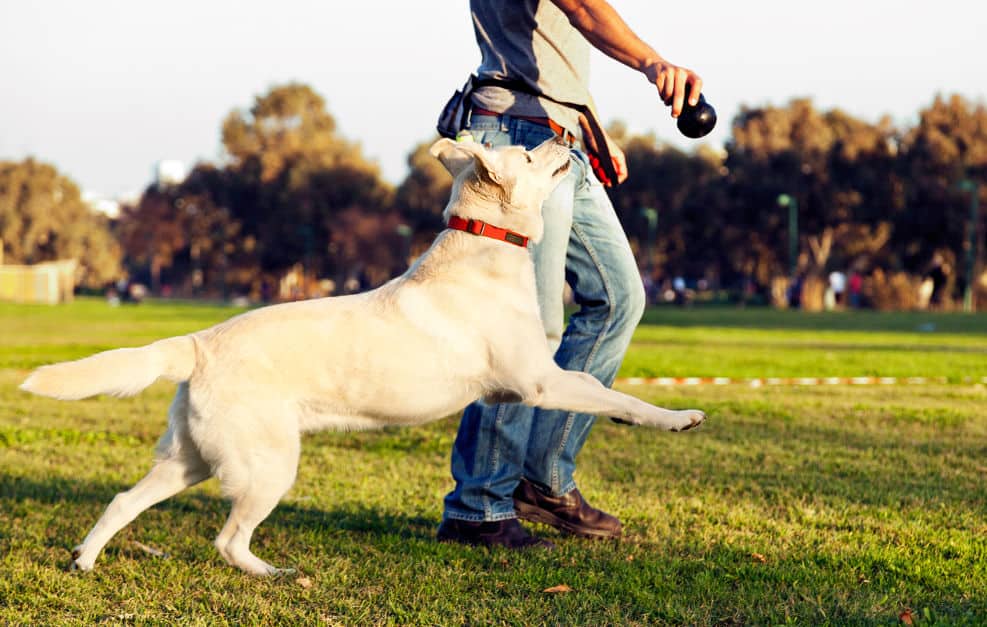The most common symptom of dry skin in Labrador dog is biting himself. This is a sign of skin allergy. It can also result in him losing all his fur or dry patches on his body. If the allergy is severe than he would be itching on himself the whole day. The important point to note here is that it is possible to treat a dog’s dry skin problems.
How do I treat my Labrador’s dry skin? The diet and skincare products help treat dry skin areas. Use an oatmeal-based shampoo for his grooming. The complete solution includes finding the root cause of the problem and then bringing a change in Labrador’s lifestyle according to the solution for that problem.
If you visit a vet then you would hear the term pruritus. This is the terminology that medical professionals use to describe skin allergy. The irritation on their skin causes them to bite and scratch their legs on their bodies. If the skin is taken care of then you will not see scratching of the body with legs.
Common Reasons for Skin Problems in Labradors
Just like any other breed, the Labrador is susceptible to a host of skin problems. These may arise from the kennels wherein they live or in the environment where they dwell as a while. If and when they do get into contact with other dogs, the possibility of this issue arising is also alert.
It is important to know about these issues and how to potentially mitigate them. Of course, this is impossible to do not unless you are aware of the common issues which are likely to affect your dog. This first part of our discussions endeavors to do just that. We have dedicated it to the specific issue of skin problems.
Though there is an infinite number of possible skin problems, some are more pronounced. They are likely to affect your breed more often than the others. In this segment, we endeavor to look into the top skin problems and the symptoms that characterize them.
1) Fleas
Fleas are small wingless insects. They prey on the blood of all mammals, dogs included. In the course of feeding on the blood of mammals, they potentially transmit diseases. In particular, they bite the skin to inflict untold pains and sufferings.
In many cases, fleas thrive in dirty environments. Those areas that are dark and devoid of light may also encourage their growth and proliferation. That is why you have to be extra careful to keep your kennel clean and devoid of dirt as much as possible.
They themselves are not really harmful. However, the compounded effects of their sicknesses are what may pose permanent dangers to your lab. Perhaps the most reliable way of combating them is to know the signs and symptoms which epitomize their infections. Find them explained in detail here.
Symptoms of Fleas
- Extremely itchy bites
- Red swellings which develop within hours of the bites
- Blisters which are painful when burst
- Too bad wounds in the feet and legs
- Secondary infections which stem from direct contacts and scratches
2) Bacterial and Fungal Infections
Bacteria and fungi may also harm your Labrador breed. Bacteria are small unicellular organisms that cause many kinds of sicknesses and infections. They are responsible for food poisoning alongside many other possible harms and dangers. When in contact with your dog, they pose some dangers.
Fungi are also microorganisms. If and when they invade your dog’s body, they may give rise to sicknesses which mainly affect the skin of the dog. If the sicknesses are not mitigated, they may spread further and wider to other organs of the body.
Though these two differ in their structural makeup and functioning, they yield more or less similar dangers to your dogs. They are responsible for more or less similar diseases and may even intensify those sicknesses which the others cause. Below are some of the symptoms which signify their sicknesses.
Symptoms of Infections
- Redness on the skin
- Changes to the skin’s structure and tone
- Peeling or cracking of the skin
- Coughs
- Sneezes
- Fever
- Inflammations
- Vomiting
- Diarrhea
- Fatigue
- Cramping

3) Mites
Mites are smaller animals that have four legs. As such, it belongs to the arachnid family rather than insects. They too thrive in a dirty, dark, and suffocating environment.
If and when they come in contact with your dog, they might give rise to some serious sicknesses and infections. Moreover, they also transmit diseases and other pathogens.
The exact kind of disease, pathogen or infection they transmit largely depends on the extent of the infestation and the sub-species concerned. Of all these possibilities, some two infections particularly stand out. These are the demodectic mange and the sarcoptic mange.
Our discussions hereunder revolve around these twin issues. We shall look into what exactly they are, their potential dangers and what to do to mitigate their likely consequences.
Demodectic Mange in Labradors
Also called Demodex, this is a very common skin problem in the Labrador dog. It is caused by mites that are eight-legged, cigar-shaped, and tiny. To give rise to this disease, the mite has to reside in the hair follicle as well as the oil glands.
While here, the mites feed on these parts of the body and in doing so, inflict this infection. Further to the infections above the mites are also uncomfortable for your dog. They interfere with your dog’s rest and composure in the course of chewing off some of their body parts.
In case these damages are not forestalled or revered the end results may often be too uncomfortable. The mites might cause permanent and irreversible side effects. Though not deadly, the infection does potentially leave some ghastly sights which interfere with your dog’s aesthetics.
Sarcoptic Mange in Labradors
This is a highly contagious skin disease that is common among the Labrador breed. It is chiefly brought about by the Sarcoptes scabiei mite variety. These mites have the tendency to burrow through the skin thereby irritating, and itching your dog’s skin intensely.
In case the trend goes on unabated, all hair might eventually fall off completely. This is a rather unfortunate position to find yourself in. As we speak, there is no clinical remedy to the issue of zero hair. If all hair goes, there is no way you can possibly bring them back.
Other than all the hair falling out, the mites may also cause some permanent damages to the organs that lie within the skin. These might take the forms of bleeding, the complete destruction of the hair, and even paralysis of the said organs.
Symptoms of “mange” or mites
- Skin redness
- Ghastly rashes
- Excess itching
- Complete hair loss
- Sores and lesions
- Scabby, crusty or scaly skin
- Bumps and blisters on the skin surface
- Greyish or white tracts
4) Dry Skin
From time to time, the skin of your dog might dry out for a number of reasons. These could be due to infestations by parasitic infections, dietary insufficiency, poor grooming, over-exposure to adverse weather elements, and allergic reactions.
If the condition is not mitigated in a timely manner, the consequences might be devastating. The skin of your lab might become too dry, inflamed, itchy, and red, to mention but a few!
All these might also lead to the permanent fall off or loss of hair. That is why you want to reverse the condition as promptly as can be.
Some of the most fruitful approaches are the elimination of the vectors, supplying a balanced diet, removal of the dogs from direct exposure to adverse weather elements and bathing the dog thoroughly using the right agents.
You may also wish to bring in a veterinarian to assist in case you happen to get stuck along the way.
Social Reasons for Lab to Scratch or Bite Himself
Dogs by nature are not supposed to bite or scratch themselves. However, some extraordinary circumstances might arise which might force them to do so. These circumstances are as varied as there are possibilities that may underlie the same.
Examples of these circumstances are responses to allergies, bites from pests and insects, and other social reasons. In this segment of our discussion, we are going to look into the social reasons which might cause your lab to bite or scratch itself.
For a start, social reasons are those which arise out of the interaction of your labs with their environment. They are not so much tied on food, pests or diseases as is the case with the other kinds of likely causes.
Instead, they are tied mostly to how your dog relates to others and the guests within your households. Unlike the allergies, bites, and diseases, they are not genetic but mostly brought about by the interaction with the given environment your dog exists in.

Anxiety Causes Chewing and Itching on Themselves
Anxieties are persistent and often excessive worries about everyday situations. It can also affect dogs much as it primarily targets and impacts humans.
Three main reasons are to explain the rise of this issue. These are social situations involving the interaction of your dog with humans, loud and frightening noises, and separation from owners.
Though not major, prolonged loneliness also has a role in making your dog anxious. Then again, some are genetically predisposed to this issue.
That is why it makes sense to inquire from your breeder the history of the exact lab you might be interested in. An anxious lab will exhibit faster heartbeats, rapid breathing, excessive fatigue, and unnecessary sweating.
Whenever these breeds find themselves in an anxious situation, they will make some attempt to escape. Some may turn aggressive. All of them though will bite and itch on themselves as a way of diminishing the adverse side effects of the pains that come along.
Solution for Anxiety in Dogs
The following remedies might help to calm an anxious dog:
- Regular exercising with the dog owner
- Interaction with other like-minded breeds and members of your households
- The adoption of relevant stress-relief techniques like mental stimulation
- Playing some soothing and calming music to the dogs
- Use of essential oils to mitigate the problem
- Administrations of dietary supplements that are formulated to calm the condition
- Appropriate grooming using the latest techniques (massage and acupuncture)
No Physical Activity and Biting Himself
Other than the social issues discussed above, lack of physical activity also plays a role in making your lab resort to biting itself. Dogs feel energized and happy when they are active.
That is because they are by nature playful, agile and social animals. Any deliberate attempts to stifle their free movements are hence counterproductive.
Many labs will quickly get bored, fearful, apprehensive and socially withdrawn when denied the opportunity to exercise freely. It is not uncommon for them thereafter to bite or itch on themselves. This is normally a sign of boredom or in protest to this cruel treatment from their owners.
You hence want to make it a point of keeping your labs physically engaged. This you may do using a number of strategies which we shall explain shortly. Over and above keeping your dogs from biting themselves, physical activity is also crucial for the proper growth and strength of the animals, altogether.
Solutions to No Physical Activity or Boredom in Dogs
To counter the issue of lack of physical activity, you have to make deliberate attempts to furnish the same. Below are some of the approaches or finer details you might want to implement as a way of getting around this issue:
- Exercise your lab
- Socialize with it
- Make use of food puzzles
- Put your dog to work
- Enroll in classes
NB: Physical engagement in and of itself is not enough. You have to adhere to some stringent routines, maintain a comfortable frequency, and be thorough in your approach. That is the only way that your dog shall be completely worked and impacted.

Types of Allergies and How to Fix Them
Allergies come in various shades and forms. This is because many factors are to explain its rise and growth. Allergies are potentially harmful more so when neglected in the long run. That is because they might lead to permanent damages to your dog’s interior organs not to mention impairing them completely.
It is important that you understand the various causes, types, and forms of allergies. Such knowledge will help you to prepare psychologically for the same problems. In that way, you will also prevent the long-term adverse impacts from taking root in the dogs.
Then, you will also know what to do if and when the situation eventually arises. We have devoted this last segment towards that very topic. We have identified and discussed some of the most common forms of allergies and how to mitigate them.
1. Food allergies
This perhaps is the most common form of allergies. It mainly arises whenever your dog eats food that is not safe or properly suited for it. Like humans, dogs too have their unique preferences. At the same time, they are also averse to some foods.
When you persistently subject your dog to food which it is averse to, you interfere with its proper bodily functioning as well. It all of a sudden develops some phobia towards anything edible that is administered to it. That is the last place you want to put your dog in.
Some of the symptoms that characterize food allergies are digestive issues, swollen airways, vomits, and bloating. It is hence absolutely necessary that you get to understand your dog’s feeding patterns. This is by far the most significant step towards warding off this problem and its associated dangers.
Solution for food allergies
- Get to know your dog’s feeding preferences
- Read the food labels carefully before purchasing any food
- Recognize symptoms which your dog suffers
- Vary your food administration appropriately taking care that you poison your dog
- Seek treatment if possible to reverse the allergy permanently
Some allergies may die down naturally in the course of time. Do not shy away from attempting to subject your dogs to those foods which it could not take earlier. Then again, you need some advice and assistance from a qualified veterinarian as a possible way forward.
2. Dry Skin allergies
When the skin of your lab gets too dry, it might trigger some allergic reactions. The dry skin may arise from allergic reactions or skin disorders. Of these disorders, psoriasis and eczema are the two most outstanding. They are the ones that are responsible for many of these problems.
When the skin becomes dry, it also develops a sense of itchiness. This one worsens the situation in that it makes your dog spread the pathogens wider and farther. It is for this reason that you want to slow down the itchiness as swift as you possibly can.
Doing so entails adopting a number of steps and measures. All these are geared towards the reversal of certain unique problems which disease may impact on your dog. The proceeding segment of our discussion goes ahead to suggest some of the most plausible solutions and intervention measures.
Solutions to Dry Skin in Dogs
- Administer your dog soothing oatmeal bath every fortnight
- Apply a dog skin moisturizer after the bath
- Use warm rather than hot water to bathe your dog
- Wash with a fragrance-free and gentle cleanser
- Scrape out the lather slowly and gently

Labrador Dry Skin in Winter Season
Though common in summer, the dry skin menace can also arise in the winter. Though not as severe as is the case of the summer months, it is still important that you prevent the issue from happening. That is because the effects take longer to bite.
If and when they do eventually bite, however, they might cause permanent and irreversible harm to your dog. To prevent the issue of dryness, you will have to know the root cause of the menace during the winter months.
Two main reasons explain or are to blame for this problem. These are the heating systems and indoor allergens. In this last segment, we shall look deeper into these two common causes and how they contribute to this problem.
1. Indoor Dryness of the Air Due to Heaters
As stated above, the problem of dry skin may be caused by air heaters. These are appliances we switch on to furnish our indoor interiors with adequate heat when it is too cold and freezing outside. Though noble, they are not without their fair share of potential downsides.
They burn up all the moisture in the indoor atmosphere which in turn makes the air dry. With dryer air comes the risk of higher rates of evaporation. It is this one which makes the skin of the dogs to be drier and cracked. The dogs, just like humans, will feel itchy, flaky, and uncomfortable when confronted with this problem.
To combat this problem, it is advisable that you exercise some moderation while utilizing the heaters. Do not leave the heater open for far too long. Make some attempts also to fix in a dehumidifier. It has the potential to replenish the lost moisture or vapor in your room. In this way, it slows down the damning effects of the dry air.
Do not forget also to bathe your dog in some oatmeal as we have already stated above. The treatment regimen has that uncanny ability to replenish the lost moisture which your dog might have suffered. Then again you have to moisturize the skin of your dog from time to time.
2. Indoor Allergens in Your House
Other than the air heaters, some indoor allergens may also cause the problem of dry skin. This allergy is primarily caused by the allergens which those who stay indoors possess. They include the cockroaches, pet dander, mold, pollen, and dust mites.
These, in turn, arise from many possible causes like pets, wall-to-wall carpets, soft furniture, stuffed toys, bedding, damp areas, indoor plants, and mattresses which lack allergy covers. Whenever some of these allergens react with the skin of your dog, they might cause the latter to dry out.
At the onset of the winter, you are required to clean your house completely. Do the same to the pieces of household furniture which are more likely to harbor dirt and germs. Then, suck out all dirt from all pieces of furniture and other areas in your home.
Given that you will spend much of your time indoors during winter, it is advisable also that you tone down your use of perfumes and fragrance oils. This is a good way to reduce the likely emergence of respiratory-related infections and allergies. You will go a long way in diminishing the possible occurrence of the problem.
NB: Though the discussion above centers exclusively on the cause of dry skin in your lab, the lessons may apply to the human occupants of your home as well.
Dry skin menace is as harmful to humans as it is to the dogs. Be sure hence to adhere to the stipulations above to combat the very issue for the human members of your household.
Conclusion on Labrador Skin Problems
There can be several reasons for the skin issues in Labs. It is important to identify the specific reason and then giving it the proper treatment.
The reason and symptoms guide that is given above in the article will help you get better results at the earliest.
There is nothing much to worry about. Almost every dog goes through skin problems in his lifetime. Labrador skin problems have so many solutions available and this article is an endeavor to give the exact information on that.
References
- https://onlinelibrary.wiley.com/doi/abs/10.1111/j.1365-3164.2010.00950.x
- https://books.google.com/books?hl=en&lr=&id=ylvgMs4qct8C&oi=fnd&pg=PT19&dq=Labrador+Dry+Skin&ots=iFnBCOj_76&sig=6J0K4EhA0d9aRPxLRbK9_K63v-4
Table of Contents




